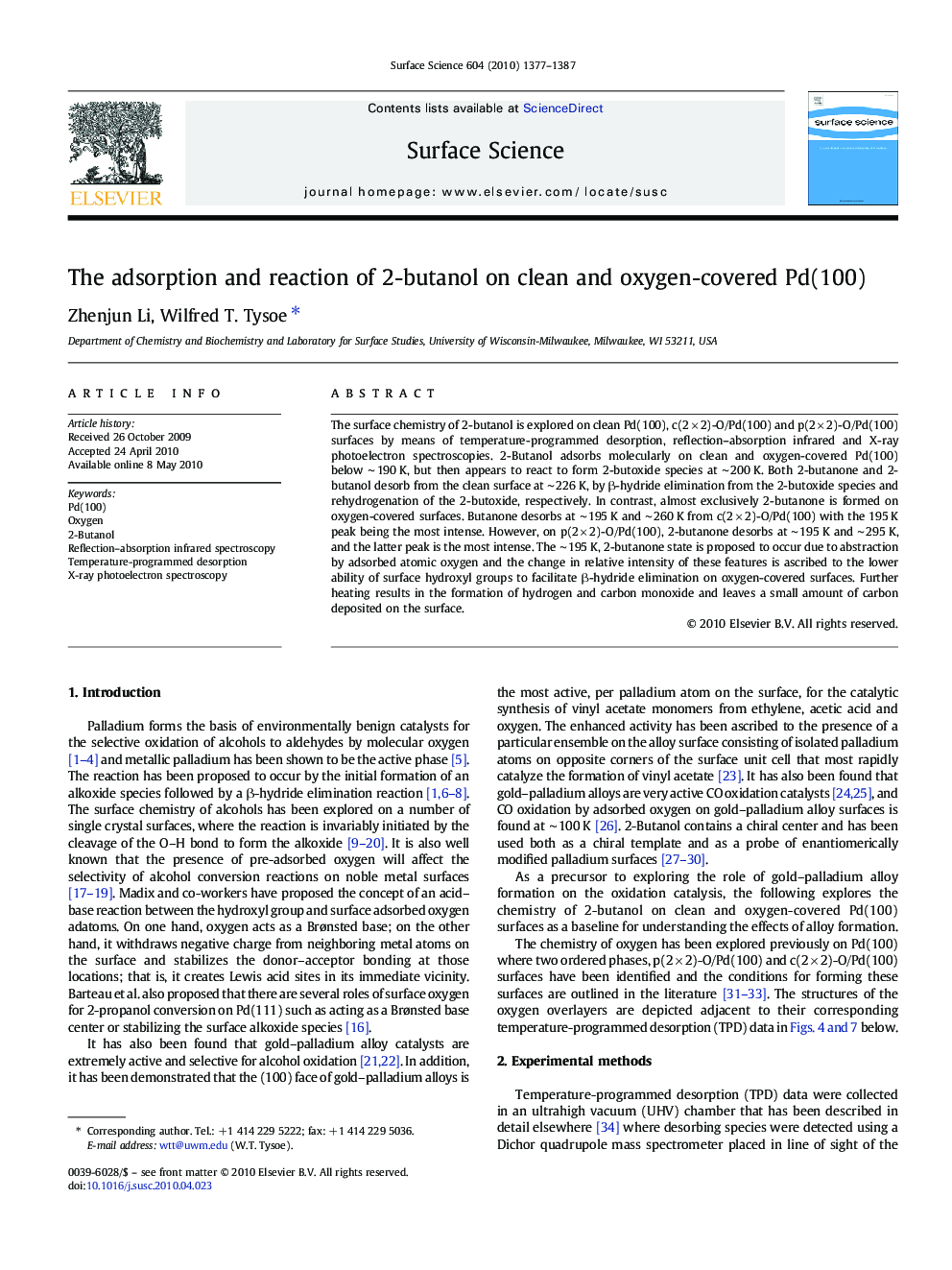| Article ID | Journal | Published Year | Pages | File Type |
|---|---|---|---|---|
| 5423063 | Surface Science | 2010 | 11 Pages |
Abstract
The surface chemistry of 2-butanol is explored on clean Pd(100), c(2 Ã 2)-O/Pd(100) and p(2 Ã 2)-O/Pd(100) surfaces by means of temperature-programmed desorption, reflection-absorption infrared and X-ray photoelectron spectroscopies. 2-Butanol adsorbs molecularly on clean and oxygen-covered Pd(100) below â¼Â 190 K, but then appears to react to form 2-butoxide species at â¼Â 200 K. Both 2-butanone and 2-butanol desorb from the clean surface at â¼Â 226 K, by β-hydride elimination from the 2-butoxide species and rehydrogenation of the 2-butoxide, respectively. In contrast, almost exclusively 2-butanone is formed on oxygen-covered surfaces. Butanone desorbs at â¼Â 195 K and â¼Â 260 K from c(2 Ã 2)-O/Pd(100) with the 195 K peak being the most intense. However, on p(2 Ã 2)-O/Pd(100), 2-butanone desorbs at â¼Â 195 K and â¼Â 295 K, and the latter peak is the most intense. The â¼Â 195 K, 2-butanone state is proposed to occur due to abstraction by adsorbed atomic oxygen and the change in relative intensity of these features is ascribed to the lower ability of surface hydroxyl groups to facilitate β-hydride elimination on oxygen-covered surfaces. Further heating results in the formation of hydrogen and carbon monoxide and leaves a small amount of carbon deposited on the surface.
Keywords
Related Topics
Physical Sciences and Engineering
Chemistry
Physical and Theoretical Chemistry
Authors
Zhenjun Li, Wilfred T. Tysoe,
